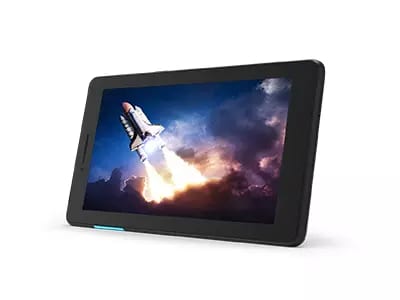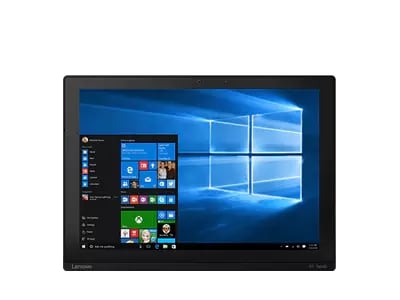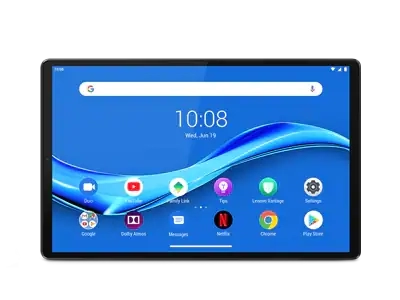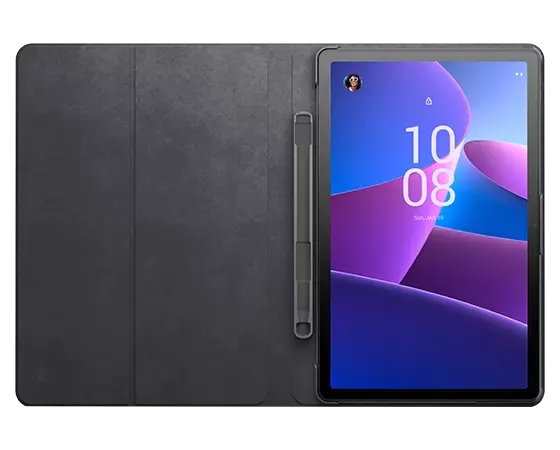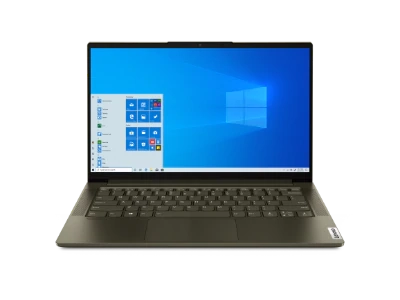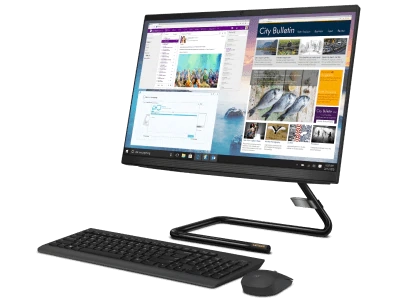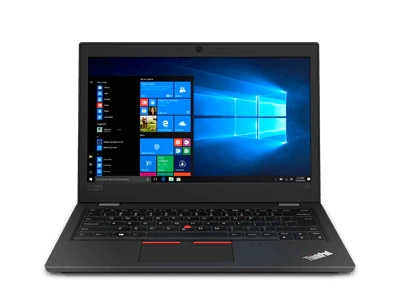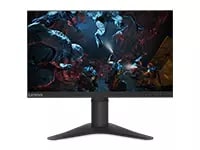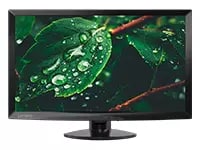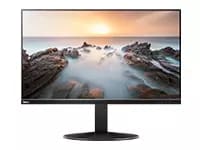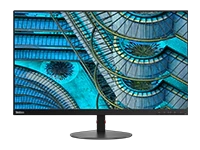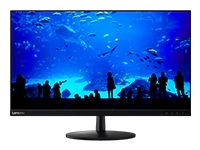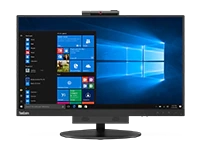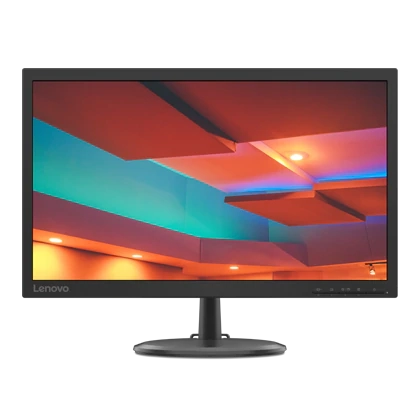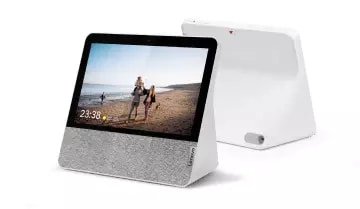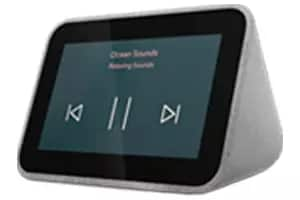Gaming Laptops Under 1,000 - What You Get (and Give Up)
Life is full of compromises. If you’re a gamer who can’t afford to drop thousands on a gaming laptop, you know exactly what we mean. In a perfect world, you’d have a fully tricked-out gaming desktop for when it’s time to get your frag on, and an equally capable laptop for those times when life’s other demands push you to leave home. But you’re not made of money, so you’re on the lookout for that rarest of unicorns: A gaming laptop under £1,000 that can still deliver the features you need, in a portable package.
Here’s the good news: these gaming laptops do indeed exist, and you’re going to be pleasantly surprised at how well they perform. Now here’s the compromise: you’ll need to decide which features are truly indispensable, because at this price point, no one is including the kitchen sink, if you know what we mean. You’ll have to figure out which components are critical to the games you want to play, and which ones are nice-to-haves. To help with that daunting task, we’ve pulled together a short, but handy guide to finding a gaming laptop under £1,000.
Where do costs in gaming laptops come from?
Frankly? The costs come from everything. Typical gaming laptops start life as average laptops, but then computer companies work with die-hard gamers to figure out how to take that humble laptop and turn it into a portable gaming powerhouse. That process involves looking at every single component, from the screen, to the keyboard, to the way the interior of the machine allows air to circulate - all with an eye to improving the gaming experience. As each element is evaluated, it is often found wanting. That standard keyboard? No way it will stand up to the constant pounding on the WASD keys. An Intel Core i3 processor? Might be good enough for day-to-day tasks, but it isn’t a gamer’s CPU. 1366 x 768 resolution? Um, nope.
There is one component, however, that really stands out on gaming rigs, and that’s the discrete graphics card. For almost every computing task you can think of -- with the exception of cryptocurrency mining perhaps -- a laptop’s CPU with integrated graphics can handle the full weight of the computing demands. Gaming is different. With games, a computer not only figures out the logic of what’s happening within the game e.g. how the physics of the various on-screen objects must play out, but it also has to convert that information into the millions of pixels that you see on your display. Graphics cards, like NVIDIA’s GeForce GTX line, are designed to shoulder this load, enabling much higher resolutions, details, and frame rates than laptops without discrete graphics. All of that extra power doesn’t come cheap, unfortunately, and high-end graphics cards can add hundreds to the price of a laptop.
What you absolutely MUST have spec-wise
Which components should your gaming laptop have? To answer that, you need to first know what kinds of games you’ll want to play. Each game comes with a minimum and recommended set of specs for your machine. Minimum specs are just that -- the hardware you’ll need to play a game at its lowest possible settings. Minimum specs don’t guarantee you’ll enjoy how a game looks, just that it will be playable. Recommended specs are what the publisher thinks you’ll need to have a really good experience, so let these be your guide.
To cover most of the games on the market at the moment, you’ll want at least:
- A current-generation, quad-core CPU, preferably an Intel Core i5 or better
- 8GB of DDR4 RAM
- A discrete graphics card, like Nvidia’s GeForce GTX 1050, with a minimum of 4GB of video ram (VRAM) or better
- A screen that can display 1920 x 1080 resolution (otherwise known as 1080p, or Full HD)
Obviously, any of these specs can be enhanced for an even better gaming experience, but a gaming laptop with these components will definitely get the job done.
How to buy cheaply
There are of course, plenty of gaming laptops on the market with these components that cost well over £1,000, so you’ll have to avoid certain add-ons to bring the price down. Here’s a few features that commonly appear on gaming laptops, because they’ve been proven to significantly add to the overall gaming experience. Eliminating them from your shopping list will sting a bit, but doing so will absolutely save money
- Solid-state drive (SSD): SSDs are basically hard disk drives made from the same kind of memory chips as your RAM, which makes them many times faster than their spinning-disk cousins. Even small, 128GB SSDs can make a big difference to how fast your machine can run, because the operating system, and your most-played games can live within this super-fast storage device. Still, gamers have been getting by without SSDs for decades, and if you need save a few bucks, sticking with a standard 1TB HDD will still let you enjoy your favorite titles.
- Mechanical keyboards: With a higher level of precision and tactile feel thanks to individual mechanical switches beneath each key, mechanical keyboards are loved by gamers. Increasingly, gaming laptops are coming equipped with mechanical keys, but it’s an expensive add-on. Membrane-based keyboards may feel a bit squishier, but they’re still perfectly serviceable for gaming.
- Bigger, brighter, higher refresh-rate screens: A higher quality screen is always going to provide a better gaming experience. It’s why you see so much discussion about display refresh rates. Just like higher refresh rate TVs are better for fast-action content, like sports, the same is true for fast-action gaming. Of course, it’s also true that you don’t need one of these displays to play fast-paced games. We’d say the extra money is worth it, but you can still enjoy games on a lower-quality screen.
- High-end graphics cards:GPUs like Nvidia’s GeForce GTX 1080, or its brand new RTX 20-series, are absolutely wild. These chipsets support the very highest quality settings, on the most demanding games. They also make child’s play out of virtual reality. But there can be a big price difference between a mid-tier GPU like a GTX 1050i, and a GTX 1080. While a high-end card is essential if you want to get the very best gaming experience, that extra money can end up wasted too. Balance in a gaming rig is essential; if any one of your components severely out-classes the others e.g.: Pairing a high-end GPU with a mid-tier CPU, you’ll create a bottleneck, which prevents those expensive parts from performing at their best. Unless you’re going to go all-out (and let’s face it, that’s not on the cards at the moment), stick with a mid-tier GPU. It will be a better match for the rest of your components, and cost less too.
- More memory: Conventional wisdom says that adding more RAM to your machine is the cheapest and easiest way to make it faster. However, more is only better if you need it. Most people find that additional RAM speeds things up, because they tend to open lots of programs, and then keep them open as they perform different tasks. If you’ve got all of the Microsoft Office apps open, plus a browser with multiple tabs, and a proven memory hog like Adobe Photoshop, then you’re already pushing a standard amount of RAM e.g. 8GB, to its limits. If you’ve also got antivirus, and backup software running in the background, things can get very sluggish. Doubling your RAM to 16GB will help for sure, but there’s a cheaper way, especially when gaming: Simply shut down all non-critical apps and tasks. 8GB should still be more than enough to run your favourite game.
Lenovo for gaming
At Lenovo, we love to game, and we love to build crazy-good gaming laptops. But that doesn’t mean we’re only focused on those who have big budgets. Quite the opposite, in fact. Our Lenovo Legion Y530 is a 15-inch gaming laptop, designed from scratch to be an outstanding portable gaming platform, yet it starts at just £750. At that budget-friendly price-point, you get all of the components you need to game with confidence, inside of a rugged chassis that sports a full-size backlit keyboard, and an airflow system that will keep its cool no matter how long you are gaming sessions last. You can choose to upgrade the very capable Intel Core i5 CPU, and the Nvidia GeForce GTX 1050 GPU, and still stay under your £1,000 budget.
While you’re here, take a look at the Lenovo Ideapad 330 (15”). It may not look like a gaming laptop, but trust us, it’s a wolf in sheep’s clothing. It has 15.6-inch FullHD+ screen, this rig has everything you need to game like a pro, including 8th Generation Intel® Core™i5 processor, 8GB of high-performance RAM, discrete NVIDIA GeForce GTX 1050 4GB graphics, and a backlit keyboard. That’s a lot of gaming power, for only £750.
Check out all of the configuration options. We’re sure you’ll be able to spec out a Lenovo gaming laptop that won’t sacrifice your need for a great gaming experience, or your bank account.


Limits: Orders limited to 5 computers per customer. For larger quantities, go to the “Where to Buy” section of the website for details of resellers and retailers of Lenovo products
Offerings and Availability: All offers subject to availability. Offers, prices, specifications and availability may change without notice. Product offerings and specifications advertised on this website may be changed at any time and without notice. Models pictured are for illustration purposes only. Lenovo is not responsible for photographic or typographic errors..
PCs shown here are shipped with an operating system.
Prices: Web prices advertised include VAT. Prices and offers in the cart are subject to change until the order is submitted. *Pricing - savings referenced off regular Lenovo web prices. Reseller prices may differ from those advertised here.
**Battery: These systems do not support batteries that are not genuine Lenovo-made or authorised. Systems will continue to boot, but may not charge unauthorised batteries. Lenovo has no responsibility for the performance or safety of unauthorised batteries, and provides no warranties for failures or damage arising out of their use. **Battery life is based on the MobileMark® 2014 methodology and is an estimated maximum. Actual battery life may vary based on many factors, including screen brightness, active applications, features, power management settings, battery age and conditioning, and other customer preferences.
Finance is provided by Duologi. Duologi is the trading name of Specialist Lending Ltd.
General: Review key information provided by Microsoft® that may apply to your system purchase, including details on Windows 10, Windows 8, Windows 7, and potential upgrades/downgrades. Lenovo makes no representation or warranty regarding third-party products or services.
Trademarks: Lenovo, ThinkPad, IdeaPad, ThinkCentre, ThinkStation and the Lenovo logo are trademarks of Lenovo. Microsoft, Windows, Windows NT, and the Windows logo are trademarks of Microsoft Corporation. Ultrabook, Celeron, Celeron Inside, Core Inside, Intel, Intel Logo, Intel Atom, Intel Atom Inside, Intel Core, Intel Inside, Intel Inside Logo, Intel vPro, Itanium, Itanium Inside, Pentium, Pentium Inside, vPro Inside, Xeon, Xeon Phi, Xeon Inside, and Intel Optane are trademarks of Intel Corporation or its subsidiaries in the U.S. and/or other countries.© 2023 Advanced Micro Devices, Inc. All rights reserved. AMD, the AMD Arrow logo, Athlon, EPYC, FreeSync, Ryzen, Radeon, Threadripper and combinations thereof are trademarks of Advanced Micro Devices, Inc. Other company, product or service names may be trademarks or service marks of others.








